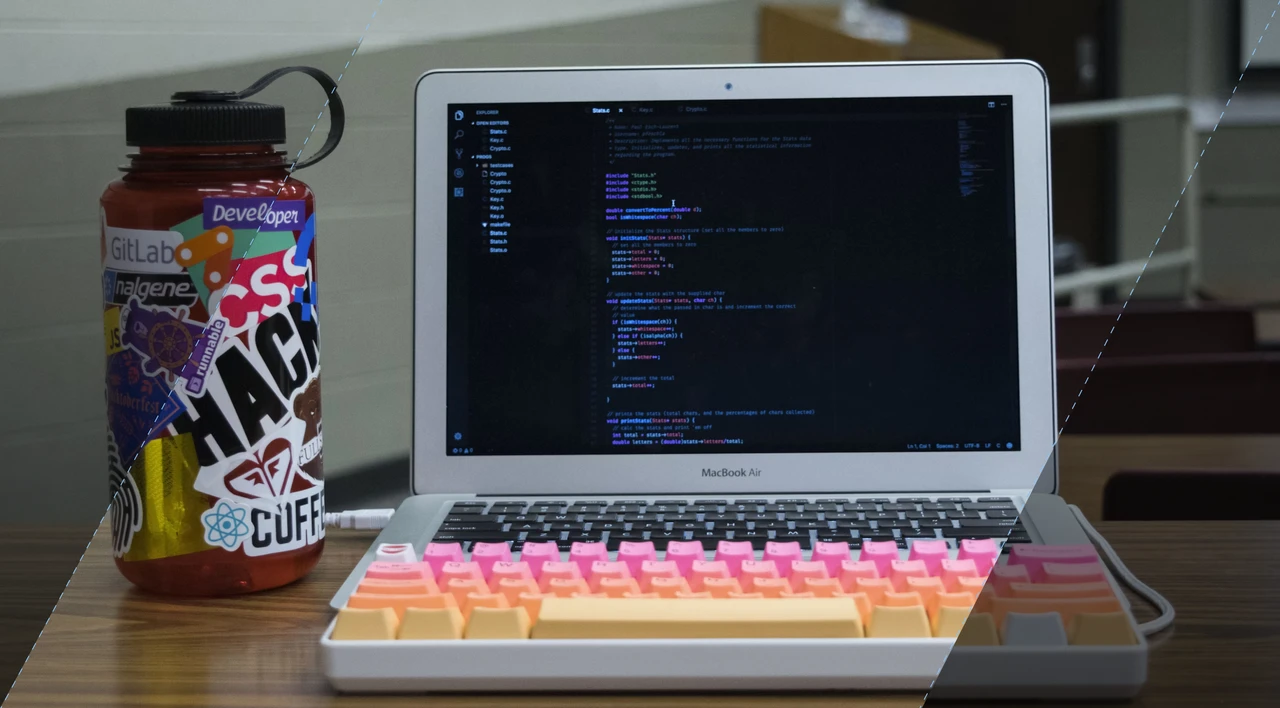SHARE
Bluetooth 5.0 vs 4.0: Understanding the Differences and Advancements

Contents
Contents
In the progression of wireless communication technologies, Bluetooth has enabled seamless connectivity between a wide array of devices. The evolution from Bluetooth 4.0 to Bluetooth 5.0 marks a significant leap in this technology’s capabilities, each version introducing critical improvements that have broad implications for device performance and user experience.
This article focuses on dissecting the key differences and technological advancements between Bluetooth 4.0 and Bluetooth 5.0. This comparison aims to provide a comprehensive comparison that underscores the enhanced features, efficiency, and connectivity brought about by these developments.
Key Takeaways:
- Bluetooth technology enables wireless connectivity between devices.
- Bluetooth has evolved from a replacement for wired serial communication to a versatile connectivity standard.
- Bluetooth offers features such as data transfer, range, power consumption, compatibility, audio quality, and IoT integration.
- Bluetooth 5.0 offers faster data transfer, longer range, improved power efficiency, and increased message capacity compared to Bluetooth 4.0.
- Bluetooth 5.0 plays a crucial role in the future of IoT, enabling seamless integration and connectivity between IoT devices.
Bluetooth 4.0 vs 5.0: Understanding the Key Differences and Advancements
Speed
One key difference between Bluetooth 4.0 and 5.0 is their data transfer speed. Bluetooth 4.0 has a maximum data transfer rate of 1 Mbps, while Bluetooth 5.0 offers data rates of up to 2 Mbps. This means that Bluetooth 5.0 can transmit data faster, resulting in quicker file transfers, smoother audio streaming, and enhanced overall performance.
Range
Another significant difference between Bluetooth 4.0 and 5.0 is their range. Bluetooth 4.0 has a range of approximately 50 meters in outdoor environments and 10 meters in indoor environments. In contrast, Bluetooth 5.0 offers four times the range, with a maximum outdoor range of 200 meters and an indoor range of 40 meters. This expanded range allows for better connectivity between devices, especially in larger spaces or outdoor settings.
Power Requirement
Power consumption is an important aspect to consider when comparing Bluetooth 4.0 and 5.0. Bluetooth 4.0, also known as Bluetooth Low Energy (BLE), was designed to be energy-efficient and consume less power compared to previous versions. However, Bluetooth 5.0 further improves power efficiency by optimizing power usage and reducing energy consumption. This means that devices using Bluetooth 5.0 will have longer battery life and increased energy efficiency.
Message Capacity
The message capacity of Bluetooth refers to the maximum amount of data that can be transmitted between devices. Bluetooth 4.0 has a message capacity of approximately 31 bytes, which limits the amount of data that can be sent in a single transmission. In contrast, Bluetooth 5.0 offers a significantly increased message capacity of 255 bytes, allowing for larger data transfers and more complex communication between devices.
Compatibility
Compatibility is an essential factor to consider when choosing between Bluetooth 4.0 and 5.0. While Bluetooth 5.0 is backward compatible with previous versions, ensuring that it can connect with devices using Bluetooth 4.0 or earlier, the full benefits and features of Bluetooth 5.0 can only be utilized when all devices in the network are upgraded to the latest version. It is important to ensure that your devices are compatible with the version of Bluetooth you intend to use.
Audio Quality
Audio quality is a crucial consideration when comparing Bluetooth 4.0 and 5.0, especially for devices like headphones and speakers. Bluetooth 5.0 includes advancements in audio coding, resulting in improved audio quality and better synchronization between audio and video. With Bluetooth 5.0, users can experience enhanced sound clarity and reduced latency, providing a more immersive listening experience.
IoT and Smart Home Integration
The number of Internet of Things (IoT) devices worldwide is projected to double from 15.1 billion in 2020 to more than 29 billion in 2030. IoT and smart home devices are rapidly growing areas of technology, and Bluetooth plays a crucial role in their connectivity. Bluetooth 4.0 introduced Bluetooth Low Energy (BLE), which was specifically designed for energy-efficient communication between small devices. Bluetooth 5.0 builds upon this foundation and further enhances IoT capabilities by offering improved range, speed, and message capacity. This makes Bluetooth 5.0 an ideal choice for integrating IoT devices and creating a seamless smart home ecosystem.
|
Feature |
Bluetooth 4.0 |
Bluetooth 5.0 |
|
Data Transfer Speed |
1 Mbps |
2 Mbps |
|
Range |
Outdoor: 50 meters Indoor: 10 meters |
Outdoor: 200 meters Indoor: 40 meters |
|
Power Requirement |
Energy-efficient (Bluetooth Low Energy) |
Optimized power usage |
|
Message Capacity |
31 bytes |
255 bytes |
|
Compatibility |
Backward compatible |
Backward compatible |
|
Audio Quality |
Standard |
Improved sound clarity and reduced latency |
Impact on Device Connectivity
Bluetooth technology is essential for seamless device connectivity, enabling communication between various devices. When comparing Bluetooth 4.0 and 5.0, it becomes evident that they have different impacts on device connectivity.
|
Bluetooth 4.0 |
Bluetooth 5.0 | |
|
Range |
Average range of 10 meters indoors and 50 meters outdoors. |
Four times the range of Bluetooth 4.0, with an average range of 40 meters indoors and 200 meters outdoors. |
|
Speed |
Maximum data transfer rate of 1 Mbps. |
Data rates of up to 2 Mbps, allowing for faster file transfers and smoother audio streaming. |
|
Connectivity |
May experience connectivity issues in larger environments or when multiple devices are connected simultaneously. |
Provides reliable and stable connections, even in challenging connectivity scenarios. |
As outlined above Bluetooth 5.0 offers significant improvements in range and speed, resulting in enhanced overall connectivity between devices. With Bluetooth 5.0, you can experience reliable and stable connections, even in larger environments or when multiple devices are connected simultaneously. This means fewer connectivity issues and a smoother user experience.
Whether you’re connecting your smartphone to wireless headphones or syncing your fitness tracker with your smartwatch, Bluetooth 5.0’s improved connectivity ensures that your devices stay connected with minimal interruptions.
With Bluetooth 5.0’s improved range and speed, you can enjoy seamless connectivity and enhanced performance across a wide range of devices. Whether you’re streaming music, playing games, or transferring files, Bluetooth 5.0 ensures that your devices can communicate effortlessly, making it the ideal choice for modern wireless connectivity needs.
Enhancements in Data Transfer
Data transfer is an integral part of Bluetooth technology, allowing devices to exchange information wirelessly. When comparing Bluetooth 4.0 and 5.0, the latter brings significant enhancements to data transfer capabilities. With Bluetooth 5.0, you can experience faster and more efficient data transfers, thanks to increased data rates and message capacity.
Bluetooth 5.0 offers data rates of up to 2 Mbps, compared to Bluetooth 4.0’s maximum rate of 1 Mbps. This enhanced data rate enables quicker file sharing, smoother streaming of media, and improved overall performance in various scenarios.
In addition to faster data transfer speeds, Bluetooth 5.0 also provides a larger message capacity. Bluetooth 4.0 has a message capacity of approximately 31 bytes, which limits the amount of data that can be transmitted in a single transmission. On the other hand, Bluetooth 5.0 offers a significantly increased message capacity of 255 bytes. This allows for larger data transfers and more complex communication between devices.
These data transfer enhancements make Bluetooth 5.0 particularly beneficial in scenarios such as file sharing, streaming media, and IoT applications that require the transmission of large amounts of data. Whether you’re sharing files between devices, streaming your favorite music, or connecting IoT devices in your smart home, Bluetooth 5.0’s data transfer enhancements ensure a faster and more efficient wireless experience.
Bluetooth 5.0 and the Future of IoT
The global Internet of Things (IoT) market is projected to grow from $662.21 billion in 2023 to $3352.97 billion by 2030. This market is rapidly growing, with more devices becoming interconnected and leveraging wireless technologies for communication. Bluetooth 5.0 plays a crucial role in the future of IoT development, providing enhanced capabilities for IoT device connectivity. With its improved range, speed, message capacity, and power efficiency, Bluetooth 5.0 enables seamless integration of IoT devices, allowing for more advanced and interconnected IoT ecosystems.
|
Features |
Benefits |
|
Improved Range |
Allows for better connectivity between devices, especially in larger spaces or outdoor settings. |
|
Increased Speed |
Enables faster file transfers, smoother audio streaming, and enhanced overall performance. |
|
Expanded Message Capacity |
Allows for larger data transfers and more complex communication between devices. |
|
Enhanced Power Efficiency |
Devices using Bluetooth 5.0 have longer battery life and increased energy efficiency. |
With Bluetooth 5.0, IoT devices can communicate over longer distances, making it easier to implement IoT solutions in various environments. The increased speed of Bluetooth 5.0 ensures efficient data transfer, supporting the transmission of larger amounts of data in real time. The expanded message capacity enables more detailed and sophisticated communication between IoT devices, facilitating complex interactions within IoT ecosystems.
Moreover, Bluetooth 5.0’s enhanced power efficiency is crucial for IoT devices in the healthcare industry, as it allows for prolonged battery life and reduced energy consumption. This is especially important for IoT devices, such as wearable healthcare devices, that need to operate for extended periods without frequent battery changes or recharging.
In summary, Bluetooth 5.0’s extensive capabilities make it an ideal technology for the future of IoT. Its improved range, speed, message capacity, and power efficiency enable seamless integration and connectivity between IoT devices, paving the way for a more advanced and interconnected IoT ecosystem.
Choosing Between Bluetooth 4.0 and 5.0
When deciding between Bluetooth 4.0 and 5.0, several factors come into play. Consider the specific requirements of your devices and applications, such as speed, range, compatibility, and power consumption. Evaluate the benefits and enhancements offered by Bluetooth 5.0 and assess whether they align with your needs. Additionally, consider the compatibility of your existing devices with Bluetooth 5.0 and the potential for future upgrades. Ultimately, the choice between Bluetooth 4.0 and 5.0 depends on your specific use case and priorities.
Conclusion
Bluetooth technology has come a long way, adapting to the evolving demands of advancing technology and connectivity. The two major versions of Bluetooth, 4.0 and 5.0, offer distinct features and advancements that cater to different needs. Bluetooth 4.0, also known as Bluetooth Low Energy (BLE), introduced energy efficiency to devices, making it ideal for applications that require longer battery life. It paved the way for Bluetooth to be integrated into a wide range of devices, from fitness trackers to smart home devices.
On the other hand, Bluetooth 5.0 takes wireless connectivity to the next level. It enhances range, allowing for better connectivity in larger spaces or outdoor settings. With its increased data transfer speed and capacity, Bluetooth 5.0 enables faster file transfers, smoother audio streaming, and more efficient communication between devices. Additionally, Bluetooth 5.0 is designed to consume less power, ensuring longer battery life for connected devices.
As the Internet of Things continues to grow and smart devices become more prevalent, Bluetooth will remain a crucial technology for connecting and integrating our daily lives. When choosing between Bluetooth 4.0 and 5.0, consider the specific requirements and compatibility of your devices. Upgrade to Bluetooth 5.0 to experience the latest advancements in wireless connectivity and take full advantage of the enhanced features it offers. If you’re looking for help with Bluetooth development, read more about Flatirons’ custom IoT development services.
FAQ
What are the key differences between Bluetooth 5.0 and 4.0?
Bluetooth 5.0 offers significant improvements over 4.0 in terms of speed, range, and power efficiency. It provides faster data transfer rates and can cover longer distances compared to Bluetooth 4.0.
Is Bluetooth 5 backward compatible with Bluetooth 4 devices?
Yes, Bluetooth 5 is backward compatible with Bluetooth 4 devices. This means that devices using Bluetooth 4 can still work well with Bluetooth 5-enabled devices.
Does Bluetooth 5 support Bluetooth Classic?
Yes, Bluetooth 5 supports Bluetooth Classic along with Bluetooth Low Energy (LE) for greater connectivity options.
How does the speed and range of Bluetooth 5 compare to Bluetooth 4?
Bluetooth 5 is faster and has a longer range than Bluetooth 4, making it more efficient in terms of data transmission and connectivity over greater distances.
What are the advancements in power consumption with Bluetooth 5.0?
Bluetooth 5 consumes less power compared to previous versions, helping devices with Bluetooth 5 to be more energy-efficient and have longer battery life.
IoT Development Services
Harness the power of IoT with Flatirons Development1 innovative IoT development services.
Get the CEO's Take
Handpicked tech insights and trends from our CEO.
IoT Development Services
Harness the power of IoT with Flatirons Development1 innovative IoT development services.
Get the CEO's Take
Handpicked tech insights and trends from our CEO.

Digital Product Development: Enhance Your Business Offerings
Flatirons
Sep 12, 2025
React SEO: Optimize Your React Apps for Search Engines
Flatirons
Sep 07, 2025
Will Software Engineers Be Replaced by AI?
Flatirons
Aug 31, 2025
Best Data Analytics Strategy for Business Growth
Flatirons
Aug 25, 2025
Ruby Case Statement: A Simplified Approach to Conditional Logic
Flatirons
Aug 19, 2025
Team Augmentation: Enhance Your Workforce Capabilities
Flatirons
Aug 13, 2025